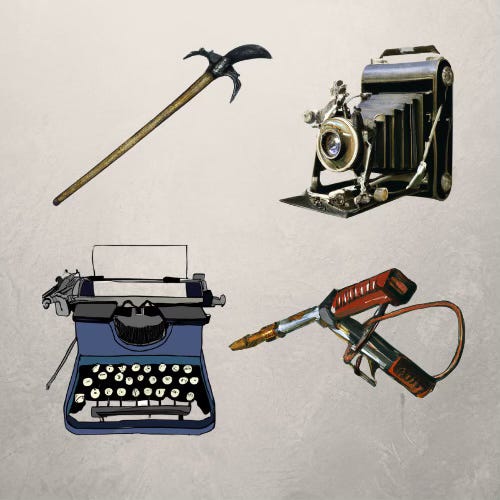I’ve always felt the power of objects. As a girl, I loved my Grandpa’s barn, all the little bits and pieces of rusted out tools, saved and sorted for potential future use, walls and shelves filled with the carcasses of broken shovels and tractors and pickaxes.
I treasure the baby food jars of buttons and pennies I saved from my Granny’s windowsill after she passed, colorful evidence of things she valued. (There’s a great episode of Radiolab that looks into the fact that some people feel the power of such artifacts while others don’t.)
Each book in my Jane Benjamin trilogy has such tools at its heart. For Copy Boy I researched the characteristics of a 1937 crowbar (so that Jane could properly swing it in a fight with her father) and a Graflex camera that would make the photos at the heart of the murder. In Tomboy there was the typewriter Jane used on the RMS Queen Mary, but also the ship-to-shore communication machinery of 1939. And now, in Poster Girl, there is a welding torch, representing the opportunity five women are given to work for pay and meaning, when they finally receive their boilermaker union cards and the chance to compete in a historic contest. But also, the torch is a weapon, at the center of everything else in this novel.

Leave A Comment